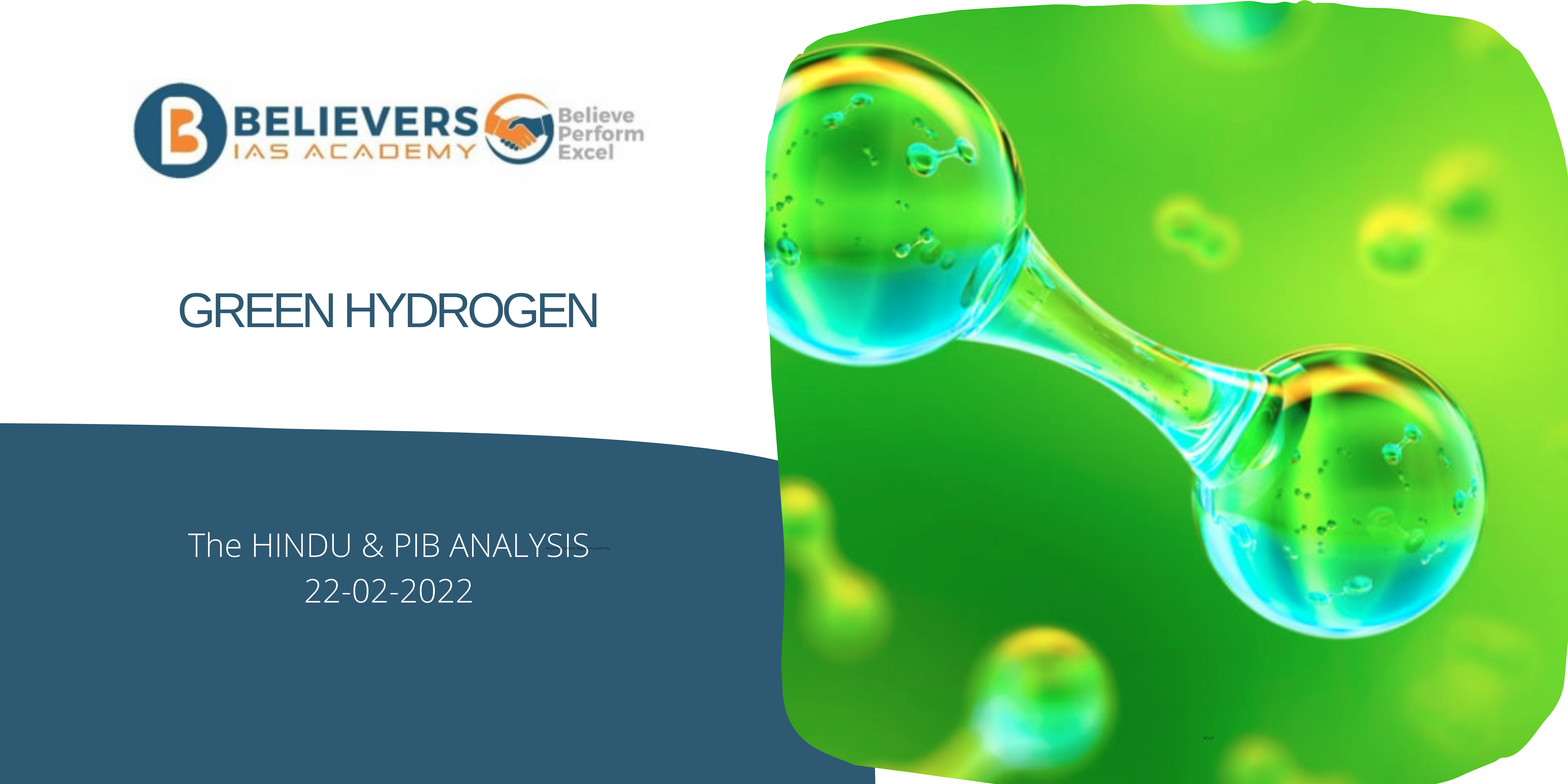- Posted on
- Daily Current Affairs
Green Hydrogen
Context:
- For India to become a global leader in green hydrogen, production costs has to be reduced significantly.
Current Status
- India is placing a big bet on green hydrogen to transition away from fossil fuels.
- Recently, the ministry of power issued a policy on green hydrogen.
- The government has waived the central inter-state transmission charges for a period of 25 years for green hydrogen production projects commissioned before June 30, 2025.
Implications
- The cost of power used to produce green hydrogen varies between 50% and 70% of the total cost of green hydrogen.
- It depends on the location of production as well as the source of renewable energy, whether wind or solar.
- Also the open-access charge constitutes a significant portion of the cost of power.
- For solar power consumption, UP, Gujarat, and Maharashtra have intra-state transmission charges of 0.25, 0.90, and Rs 2.3 per kWh, respectively.
- This disparity in intra-state transmission charges between different states would distort the green hydrogen market.
- Competitiveness of producers in states with high intra-state charges gets affected.
- So the states should either reduce or eliminate intra-state transmission charges as a top-up to the central policy.
- From example, waiving-off intra-state charges would reduce production cost of green hydrogen, in UP by 5%, in Gujarat by 12%.
Changes
- Current policy allows waivers for projects set up before June 2025.
- The National Hydrogen Mission is expected to be released this year.
- The Mission is expected to be raise the norms for blending green hydrogen in current fossil-based hydrogen streams and natural gas pipelines.
- These norms can only be implemented starting 2023.
- Since it is incremental blending, the early years would see smaller cumulative volumes compared to higher blend requirements post-2025.
- It is expected to reach 5 million tones per annum by 2030.
- Hence, the inter-state transmission charge waiver should be extended beyond 2025 and up to 2030.
- Post 2030 green hydrogen would become commercially viable due to scale of production, advancement in production technology and lower renewable power costs.




